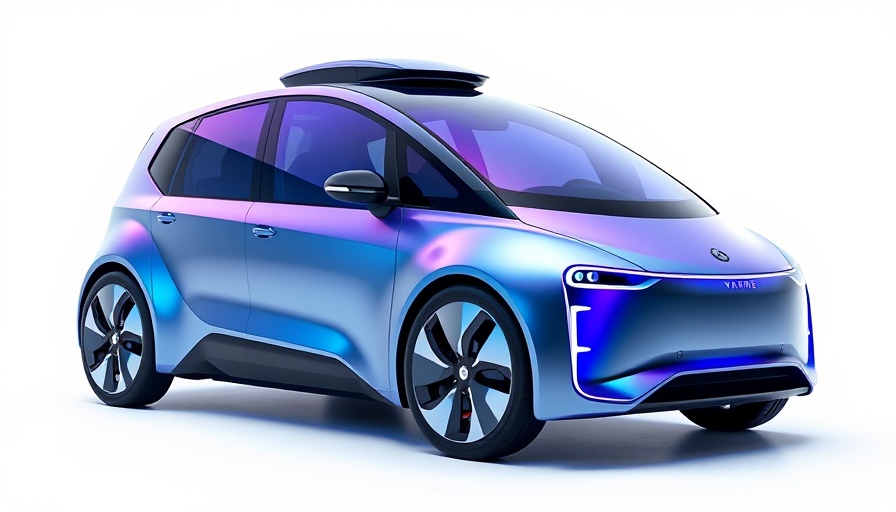
The Rise of Self-Driving Cars: A Futuristic Reality
Self-driving cars, also known as autonomous vehicles (AVs), have transitioned from being mere concepts in science fiction to genuine contenders in today’s automotive landscape. Once the subjects of entertainments like the TV show Knight Rider or the animated film WALL-E, self-driving vehicles are now being tested and adopted in cities around the globe, showcasing the intersection of technology and transport.
Understanding Autonomous Levels of Driving
As the self-driving vehicle industry matures, it has developed a standardized classification system that categorizes vehicles based on their level of automation. These levels, ranging from Level 0 (no automation) to Level 5 (fully automated), offer insight into the capabilities and limitations of different vehicle types:
- Level 0 (L0): Fully manual driving, with no automated features.
- Level 1 (L1): Basic driver assistance, such as cruise control.
- Level 2 (L2): Partial automation, where the vehicle can handle some driving tasks but requires constant human oversight.
- Level 3 (L3): Conditional automation that allows the car to drive autonomously under specific conditions.
- Level 4 (L4): High automation, where vehicles can operate independently in designated environments.
- Level 5 (L5): Fully automated with no need for human intervention.
Advancements in technology across these levels have sparked discussions about the potential impacts of self-driving cars on urban transportation, traffic safety, and the environment.
Current Developments in Autonomous Driving
Companies like Waymo and Apollo Go are pushing the boundaries of autonomous vehicle technology, operating successful public trials in cities including Los Angeles and Wuhan. These trials signal a monumental shift in how we perceive mobility, as automakers and tech developers scramble to integrate self-driving capabilities into their systems.
The promise of better mobility solutions is undeniable, with autonomous vehicles poised to enhance passenger convenience and urban transportation efficiency. However, significant challenges remain, particularly concerning safety protocols, regulatory frameworks, and public acceptance.
Road Blocks Ahead: Challenges of the Self-Driving Revolution
Despite the optimism, many experts caution that the widespread acceptance of self-driving technology may take longer than previously anticipated. Safety concerns are paramount, as evidenced by skepticism highlighted in studies like those conducted by the Pew Research Center, which indicates that mixed feelings toward autonomous vehicles persist among potential users.
Moreover, economic viability continues to be a critical hurdle. Significant investments in infrastructure and technology are necessary to integrate AVs effectively into existing transportation systems. As noted in industry reports, addressing public concerns regarding the reliability and safety of autonomous systems will be crucial in fostering acceptance and expanding the market.
Looking to the Future: Opportunities for Growth
As we look toward 2025, several key trends are emerging within the autonomous driving landscape:
- Electrification: The convergence of electric and autonomous vehicle technologies is on the rise, presenting opportunities for more sustainable mobility options.
- Enhanced Safety Features: Companies are focusing on integrating advanced driver-assistance systems (ADAS) to improve road safety and fulfill consumer expectations.
- Data-Driven Solutions: Automakers are harnessing AI and deep learning to optimize vehicle functions and enhance user experience.
In pursuit of these opportunities, auto executives are urged to embrace innovation and adaptability, particularly as consumer preferences shift toward connected and environmentally friendly options. The industry needs to empower consumers with choices while ensuring that transportation solutions align with sustainable practices.
Conclusion: A New Era of Mobility
As self-driving technology continues its gradual but promising ascent, it is clear that the automotive landscape is on the brink of transformation. Embracing these technological advancements will necessitate not only innovation but also a willingness to engage with public concerns and regulatory frameworks. For decision-makers and industry leaders, understanding these dynamics is essential as we advance into a future where autonomous driving may redefine mobility as we know it.
 Add Row
Add Row  Add
Add 




Write A Comment